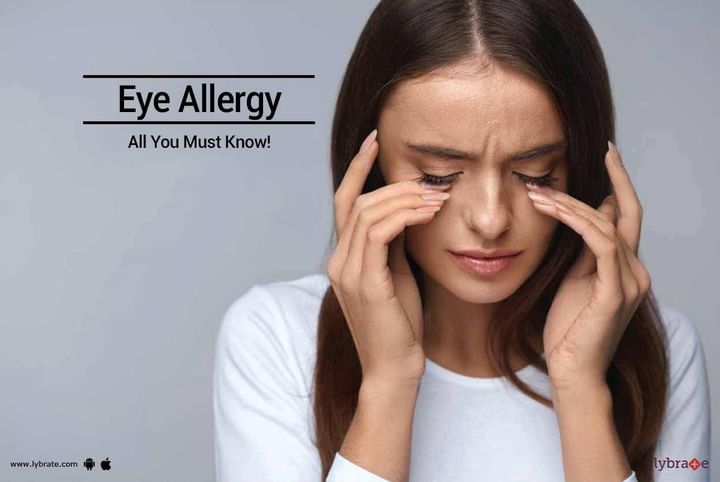Eye Allergy - All You Must Know!
EYE ALLERGIES TO BE ENDURED NO MORE!
As spring/summer approaches there is a spate of children with itching and redness of the eyes. Most of these children suffer from spring catarrh (Vernal Kerato Conjunctivitis or VKC) or sometimes seasonal allergic conjunctivitis VKC is more common in young boys but affects girls as well. It usually affects children between 3 to 16 years of age, though it may appear earlier than that and continue into adulthood. In the majority of cases, symptoms resolve at puberty. Although the name suggests a seasonal spring time occurrence, frequently the disease persists throughout the year with exacerbations episodically.SYMPTOMS include intense itching, irritation, photophobia (sensitivity to light) and burning. The itching is worse with exposure to wind, dust, and bright light and hot weather. Some patients complain of a sticky, stringy mucous discharge. There may be associated runny nose or sinusitis and some children even have allergic asthma
TREATMENT IS SYMPTOMATIC AND TAILORED TO THE SEVERITY OF THE DISEASE
Apart from medication, eye hygiene and protective eyewear to minimise exposure to the allergen (pollen or dust), as well as cold compresses, help in controlling the symptoms MEDICATION. Artificial tear substitutes provide a barrier function and help to improve the first-line defence at the level of conjunctival mucosa. These agents help to dilute various allergens and inflammatory mediators that may be present on the ocular surface, and they help flush the ocular surface of these agents. Chilled artificial tears can provide symptomatic relief as well. Those with milder symptoms are given topical antihistamines (epinastine and azelastine) which are very effective in controlling the itch.though they sometimes cause dryness. Simultaneously mast cell stabilisers such as sodium cromoglycate or newer agents such as olopatadine & bepostatine are started. The mast cell stabilisers generally do not relieve existing symptoms and thus are not effective alone when symptoms are active They must be used regularly three to four times daily, continued even when there are no symptoms in order to stabilise the mast cells and prevent the release of histamine and recurrence of symptoms. They can limit or stop the use of steroid drops over the course of the disease. They do not have any of the side effects of steroids and can, therefore, be used for a prolonged period. Those presenting with more severe disease are given topical steroid drops (e.g. prednisolone, dexamethasone. To be used 4-6 times a day-sometimes even 2 hourly. The steroid can also be given in an ointment form to be used at bedtime. A mast cell stabiliser should be started simultaneously. Steroids should be used frequently initially and then tapered to a stop once the acute stage of the disease is stabilised (usually a couple of weeks). Their use requires monitoring because of the possible effect on intraocular pressure. Long term unsupervised use can lead to glaucoma and cataract. Those not responding to conventional treatment may be given supratarsal (into the lid) injection of steroids (long-acting steroids such as triamcinolone and shorter-acting steroids dexamethasone). In very young children this may necessitate short general anaesthesia. Topical cyclosporine or tacrolimus(immunomodulators) may be effective in reducing some of the signs and symptoms of VKC without adverse effects of steroid(steroid-sparing regimen) and are used in the treatment of more severe ocular allergies. Oral antihistamines may be useful if the allergy is more widespread, affecting the nose and sinuses as well. Montelukast & cetirizine orally are other agents that have been used for symptomatic relief
REMEMBER!
Seeking help early and adequate treatment (often long term) is the key to controlling the disease and preventing serious side effects (which thankfully are uncommon). Apart from medication the role of hygiene and protective eyewear to minimise exposure to the allergen (pollen or dust) as well as cold compresses cannot be emphasised enough. Poorly controlled disease apart from making the child miserable runs the risk of complications like corneal scarring /weakening with resultant keratoconus-which have serious visual consequences. Unregimented self-medication runs the risk of major side effects like cataract and glaucoma due to unwarranted steroid overuse.



+1.svg)
